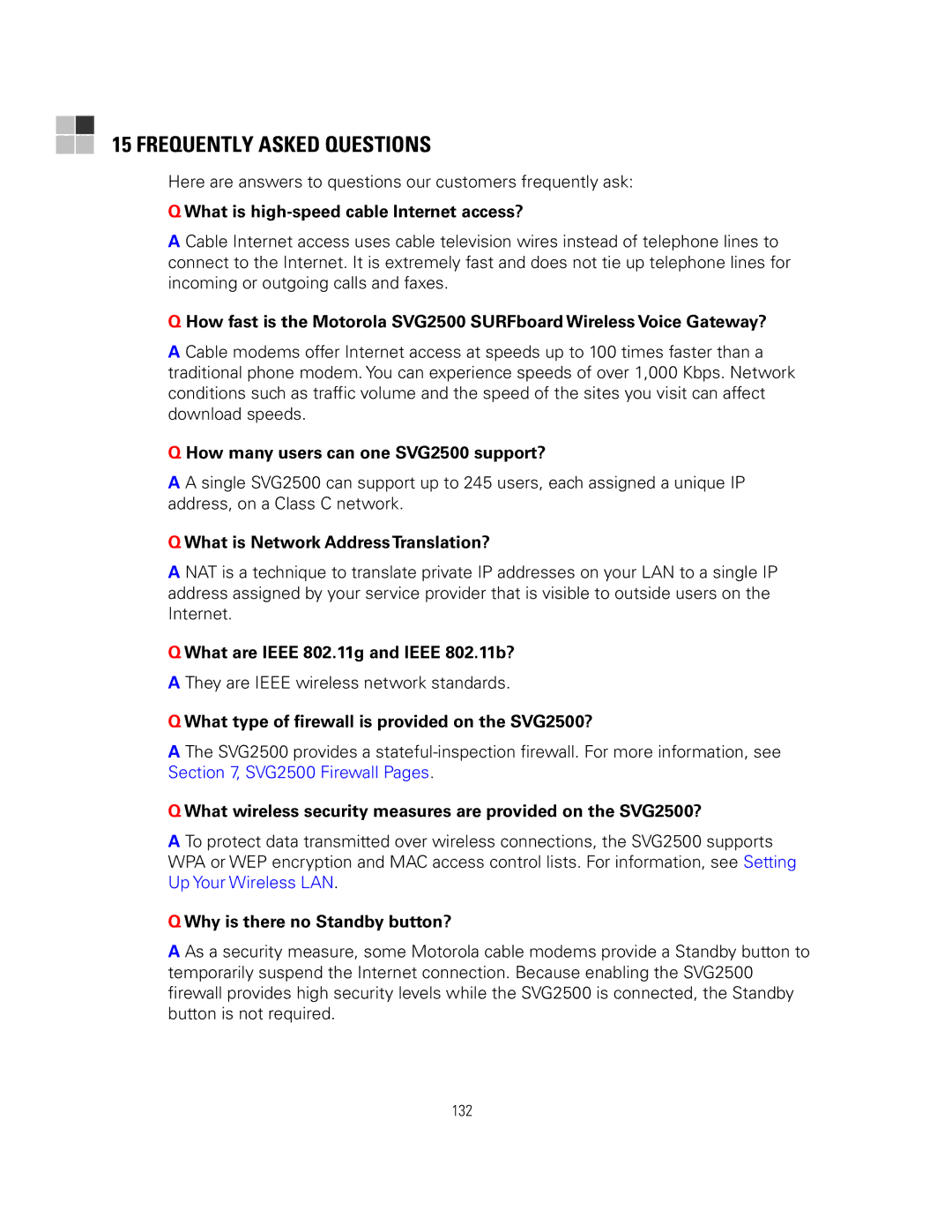15 FREQUENTLY ASKED QUESTIONS
Here are answers to questions our customers frequently ask:
Q What is high-speed cable Internet access?
A Cable Internet access uses cable television wires instead of telephone lines to connect to the Internet. It is extremely fast and does not tie up telephone lines for incoming or outgoing calls and faxes.
Q How fast is the Motorola SVG2500 SURFboard Wireless Voice Gateway?
A Cable modems offer Internet access at speeds up to 100 times faster than a traditional phone modem. You can experience speeds of over 1,000 Kbps. Network conditions such as traffic volume and the speed of the sites you visit can affect download speeds.
Q How many users can one SVG2500 support?
A A single SVG2500 can support up to 245 users, each assigned a unique IP address, on a Class C network.
Q What is Network Address Translation?
A NAT is a technique to translate private IP addresses on your LAN to a single IP address assigned by your service provider that is visible to outside users on the Internet.
Q What are IEEE 802.11g and IEEE 802.11b?
A They are IEEE wireless network standards.
Q What type of firewall is provided on the SVG2500?
A The SVG2500 provides a
Q What wireless security measures are provided on the SVG2500?
A To protect data transmitted over wireless connections, the SVG2500 supports WPA or WEP encryption and MAC access control lists. For information, see Setting Up Your Wireless LAN.
Q Why is there no Standby button?
A As a security measure, some Motorola cable modems provide a Standby button to temporarily suspend the Internet connection. Because enabling the SVG2500 firewall provides high security levels while the SVG2500 is connected, the Standby button is not required.
132
